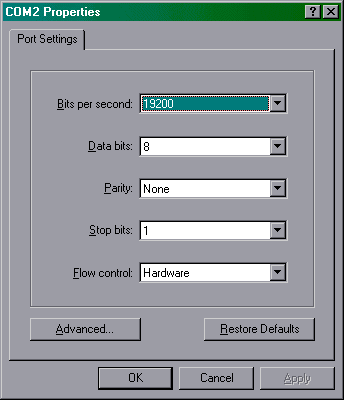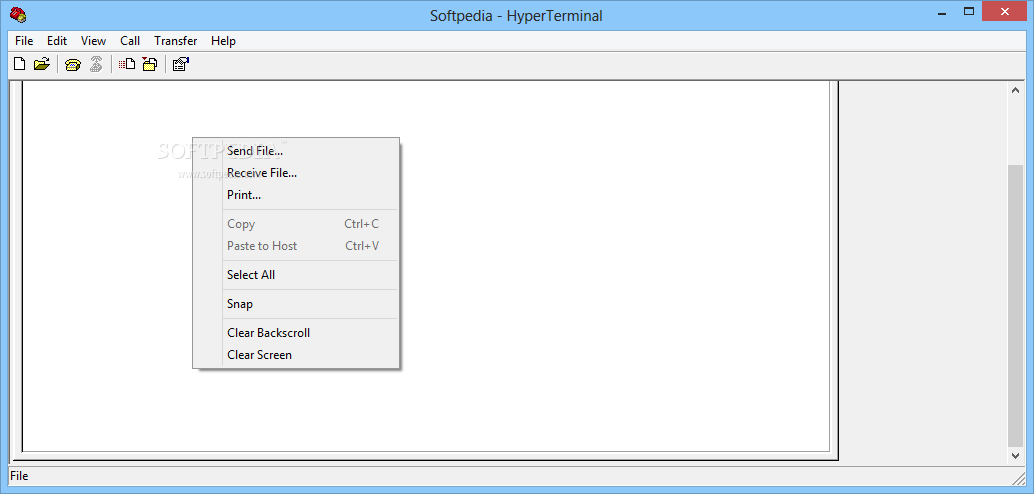Serial Number Hyper Terminal 7


Hyper terminal for linux For people that manage hardware devices such as storage, routers and many more using Microsoft Windows, the term hyper terminal is a familiar thing. They use hyper terminal to connect to all the devices mentioned above using serial cable.
For people that manage hardware devices such as storage, routers and many more using Microsoft Windows, the term hyper terminal is a familiar thing. They use hyper terminal to connect to all the devices mentioned above using serial cable. But what if you have to manage all those devices using linux?The answer is, linux has 2 alternatives to hyper terminal; one is command line based and the other is GUI based. Let me start with the command line tool first.
Serial Number Hyperterminal 7 10
It is called minicom. You can install this tool using package manager of your linux machine.
In fedora/redhat/centos:# yum install minicomRunning it for the first time requires you to do some settings by running below command as root:# minicom -sPicture below shows the screen after command minicom -sThis is where you set the baudrate, serial device you want to use etc. After finish with the setting, save it so that you do not have to do it every time. You can save it to default.dfl file, with the name of.minirc.dfl in your home folder, or you can specify the name and location yourselves.
To change the saved setting, just use the above command back.The second tool is called cutecom, a graphical serial terminal. To install it on fedora,centos or redhat:# yum install cutecomIt is easier to use since it has GUI. Picture below shows cutecom main screen, where you can set your device, parity, baudrate etc.

That were the first few things I tried. I tried both the network ID/password as well as the local ID/password. Both did not work.
Sigh., Our resident IS guru is not Telnet Savvy. I am not hard on HyperTerm.Note: Any PCs with internet access always can talk to each other via instant messaging.I basically want to able to exchange simple message between two PCs that are in a wired or wireless network, when the distant between them is beyond cable length of RS232 or USB, like two floors apart, and don't have internet access. Have you considered the Windows Messenger Service (nothing to do with the Instant Messaging)?It's built in to Windows and lets you send simple text to specific users/computers via the command line, e.g.net send this is my messageA pop-up dialog will appear on the remote PC's display.You have to enable the Messenger service on all PC's for it to work.There is an issue with spamming from outside but your computers are not connected to the internet. It's the main reason it has gone out of favor and is disabled by default.
Have you considered the Windows Messenger Service (nothing to do with the Instant Messaging)?It's built in to Windows and lets you send simple text to specific users/computers via the command line, e.g.net send this is my messageA pop-up dialog will appear on the remote PC's display.You have to enable the Messenger service on all PC's for it to work.There is an issue with spamming from outside but your computers are not connected to the internet. It's the main reason it has gone out of favor and is disabled by default. That reminds me of some great fun we had during windows NT classes.Damn that teacher must of really hated use after a few days or so.We'd popup messages during his powerpoint presentation all day long. It was a hoot.We also hacked his box to play the sound of a flushing toilet every time a default sound was suppose to go off. For two winsock hyperterminal sessions to communicate at least one must be in the 'Wait for call' mode. On one Select Main Menu - Call - Wait for call (after it has timed out with 'Cannot connect'). On the other then click 'Call'.
I used port 23 and ip addresses obtained using command 'ipconfig'. The two PC's were on the same windows network/workgroup. After this asymmetry the connection becomes symmetrical. Typing in either window appears on both.
The telnet service was not even installed on both. The firewall was the standard windows firewall enabled on both with no special changes. I have now also found that a standard windows network host PC name can be typed into the hyperterminal 'address' field instead of an ip address.